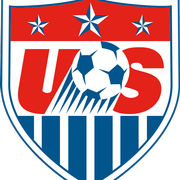Sports Law Development of the Week: Concussion Lawsuit Facing U.S. Soccer Federation

By: Cameron Miller
Though concussion risk is most often associated with full-contact sports, like football, rugby, wrestling, and combat events, others—including soccer and lacrosse—also bear heightened risk of head injury. Data gathered from the 2011-12 to 2014-15 academic years shows soccer has the second-highest concussion amongst collegiate women’s sports, trailing only ice hockey. These results make intuitive sense given how frequently soccer players use their heads during the course of the game.
These risks and the allegedly inadequate efforts to mitigate them are the basis of a new class action lawsuit, filed late last month in Pennsylvania federal court (Sherman, et al. v. The United States Soccer Federation, Inc., et al.) There, two female youth soccer players allege that the U.S. Soccer Federation and the U.S. Youth Soccer Association “have failed to adopt and enforce Laws of the Game that would reduce the risk of preventable injuries resulting from concussions and repetitive head injuries.” The complaint cites the lack of a requirement on the use of protective headgear for female players—despite data suggesting concussion risk can be reduced through use of such headgear—as the defendants’ main failure.
Plaintiffs, through their guardians, assert three causes of action:
1. Negligence
The defendants are alleged to have known of the head injury risks facing the players who participated in leagues organized under their aegis and shouldered a duty to safeguard the players from such risks, but failed to educate players and parents on the dangers of concussions and protective tools, like headgear or enact rules (such as a mandate on using headgear) that could have reduced injury risk. Plaintiffs also claim the soccer entities actually “discourage[ed] the use of headgear for the purpose of preventing” head injuries and “conceal[ed] and misrepresent[ed] pertinent facts concerning concussion preventing equipment.” The players request both monetary damages and medical monitoring due to the injuries they have already incurred and their possible future manifestations.
2. Breach of Voluntary Undertaking
Here, Plaintiffs repeat the allegations of the Negligence claim, but assert that defendants “voluntarily assumed a duty toward Plaintiffs and the Class to supervise, regulate, monitor, and provide reasonable and appropriate rules to minimize the risk of injury to the players.” This is distinct from the first cause of action, which states affirmatively that the soccer entities had a duty to make efforts to safeguard the players participating in leagues under its supervision.
The existence and/or extent of the soccer entities’ duty to protect athletes will likely play a pivotal role at the motion to dismiss phase and, should the case progress, in motions for summary judgment. The NCAA, for instance, has never be found to have a legal duty to safeguard its athletes, though on an ongoing case in New York state court could break from precedent. Considering the nominally amateur nature of both college and youth sports, lawyers for the Plaintiffs and soccer entities may look to arguments made in the collegiate context when framing their claims regarding duty of care or lack thereof.
3. Fraudulent Concealment
Plaintiffs allege that, despite nearly century-old data connecting blows to the head and concussion injuries, the defendants “passively issued guidelines about the existence of concussions but underplayed the dangers of neurological injury.” The defendants are also charged with “falsely represent[ing]” the role headgear could play in reducing head injuries and their symptoms. As a result, Plaintiffs claim, players were exposed to injury risk that would have been reduced but for the soccer entities’ failures to warn, educate, and legislate headgear usage and other safety measures.
The complaint also outlines that Plaintiffs’ class certification arguments. The putative class is “[a]ll current or former female youth soccer players at any time who competed for a team relying on rules promulgated by Defendants”—a group that could easily stretch into the thousands, according to the complaint. The commonality and typicality of the claims—all class members’ factual and legal allegations should be similar or the same, since they are played under the same rules—plus the judicial efficiency and consistency of aggregating the claims also support proceeding as a class. Should this case reach the discovery phase, one point of emphasis for Plaintiffs will be determining whether all of the members in its proposed class were not required to use headgear, as rules and regulations could conceivably have differed between leagues or states.
In response to a similar lawsuit filed in 2014, the U.S. Soccer Federation outlawed headers for players younger than 10 and reduced heading exposures in practice for played aged 11-13. Whether the defendants here will attempt to co-opt Plaintiffs with further rule changes is unclear, but the current litigation makes clear that American soccer authorities remain under threat of litigation despite their previous efforts to remove risky behavior (headers) from youth play. Further, while very few sports head injury actions have reached trial (the ongoing Ploetz v. NCAA trial is one), this case has the potential to clarify the duty of care owed to youth sports athletes—which could have substantial reverberations throughout the sprawling youth sports industry and possibly in collegiate athletics.
Cameron Miller is a 2016 graduate of Stanford University and earned a Master's in Sports Law & Business from Arizona State University in 2017. He is the Sports Lawyers Association's Research Assistant.
Comments
You must be logged in to post a comment.
Click here to log in